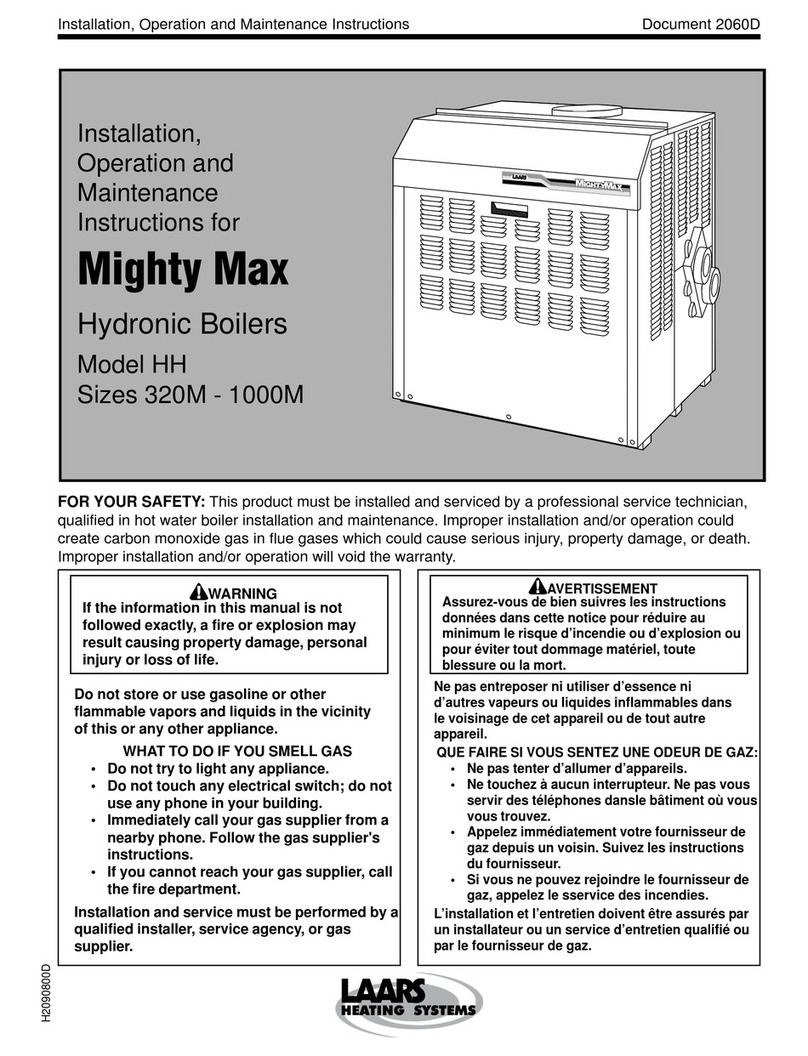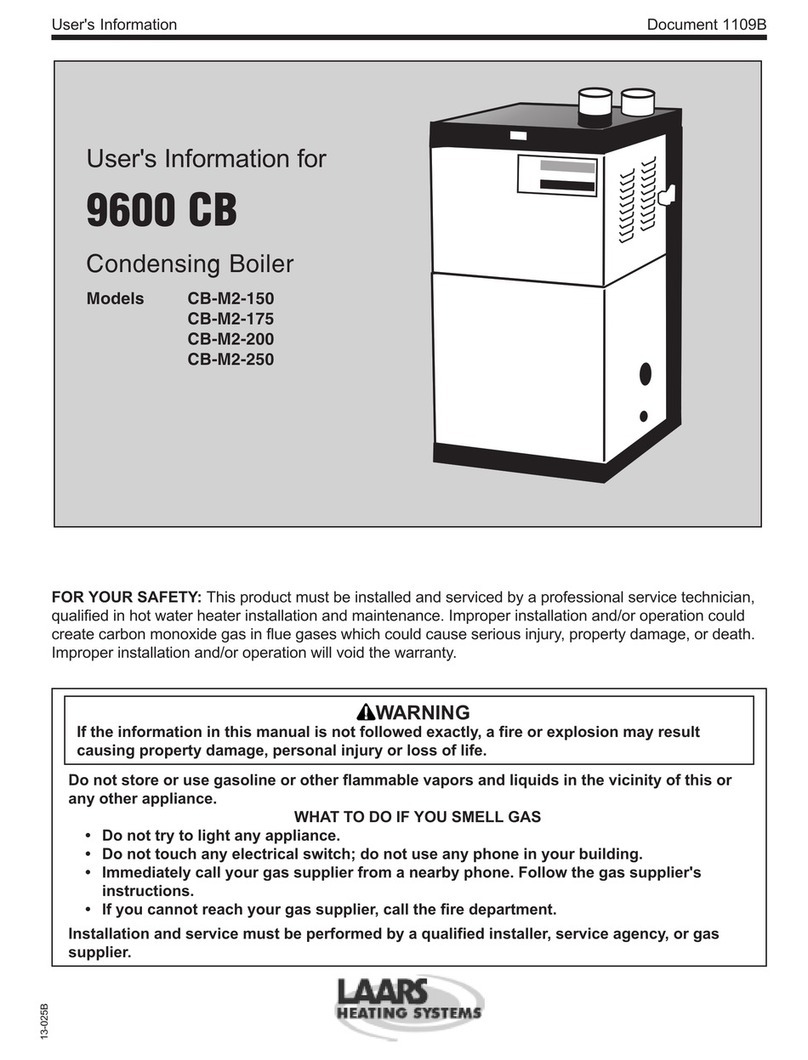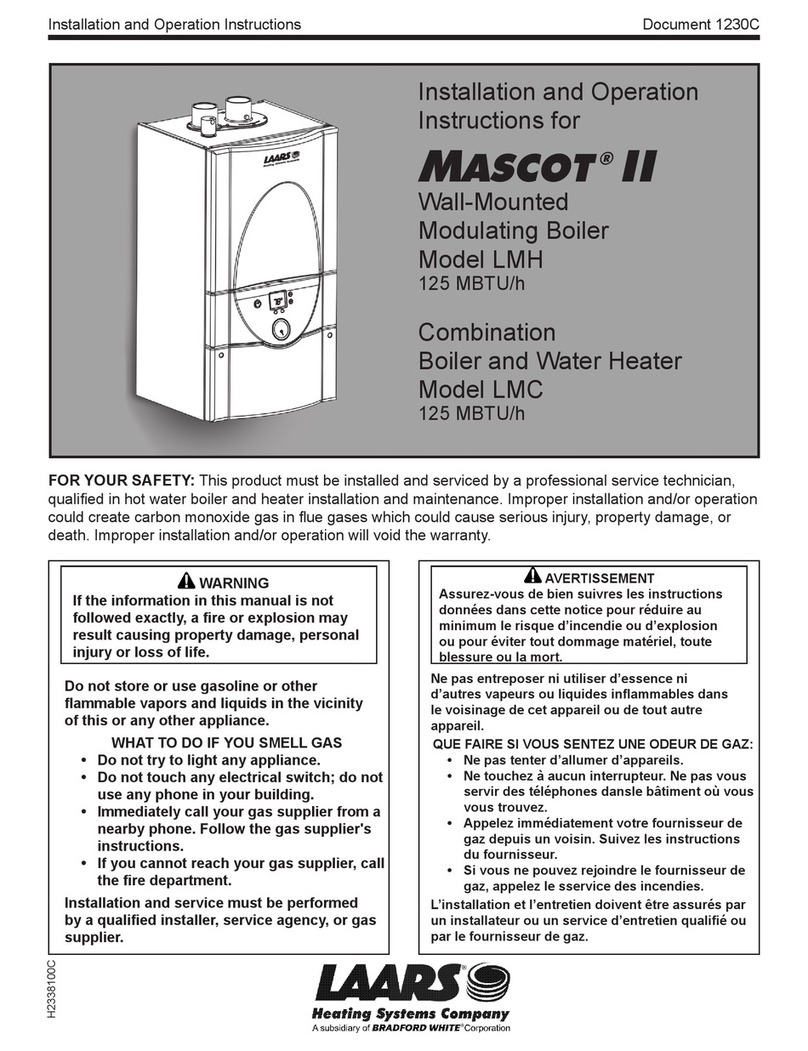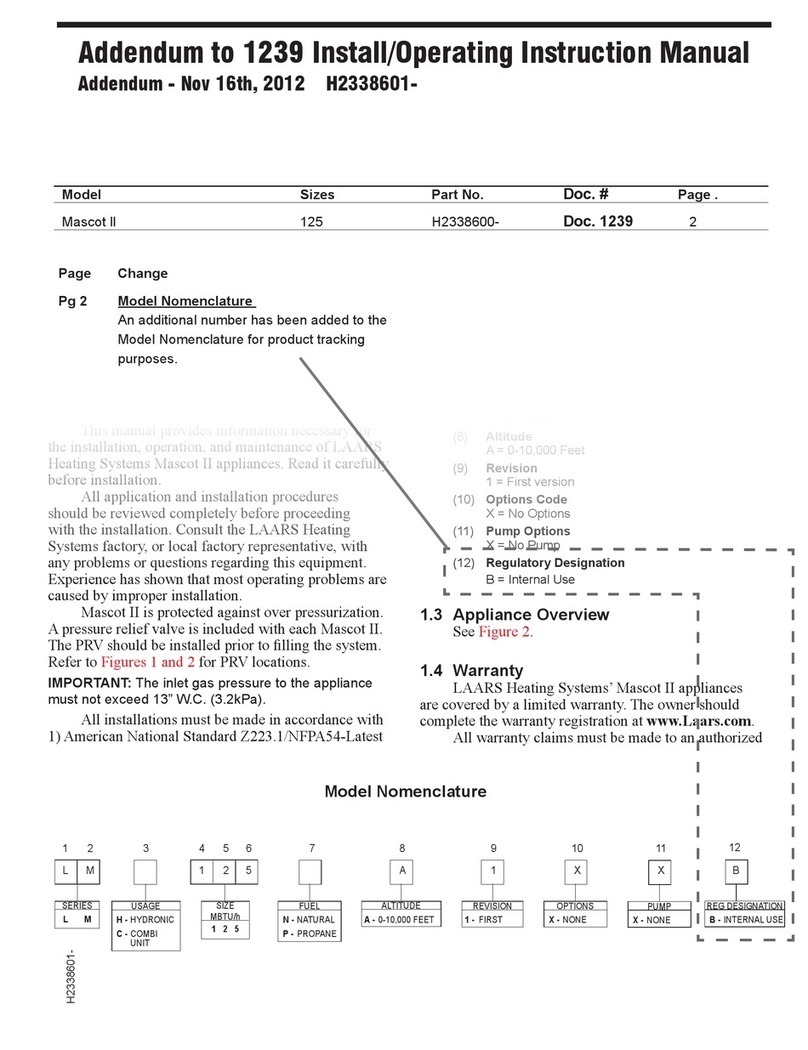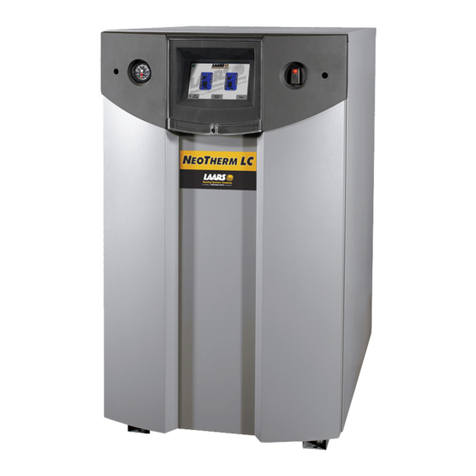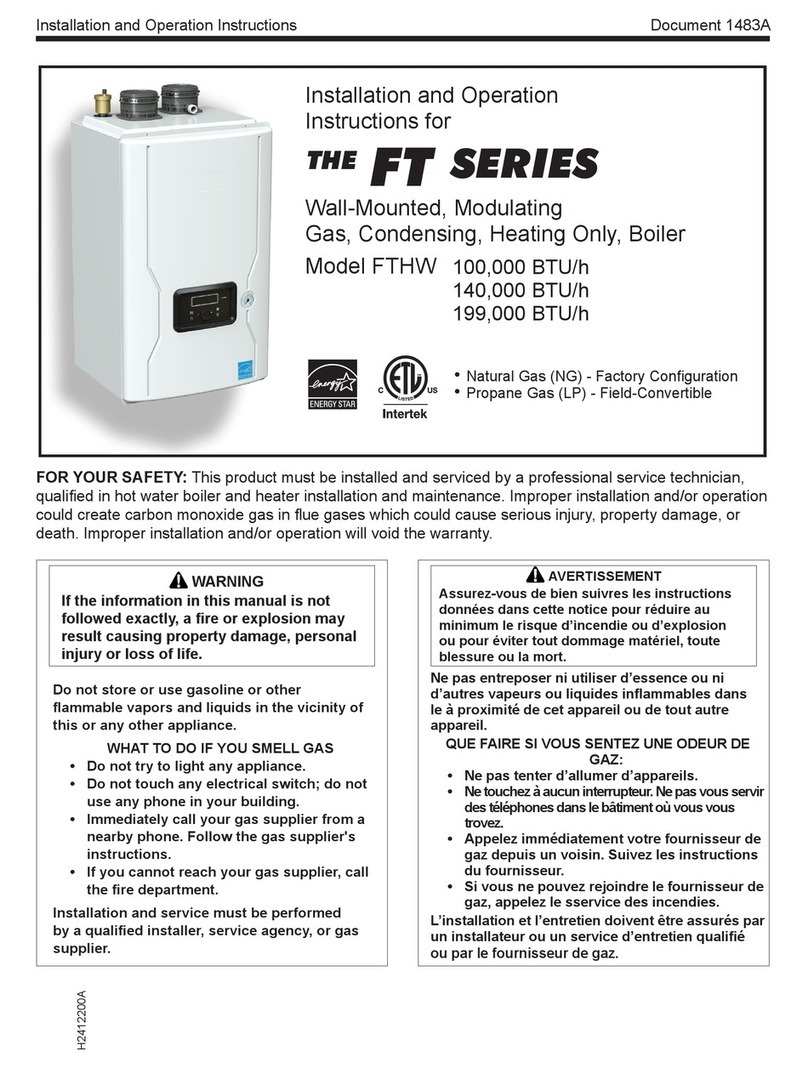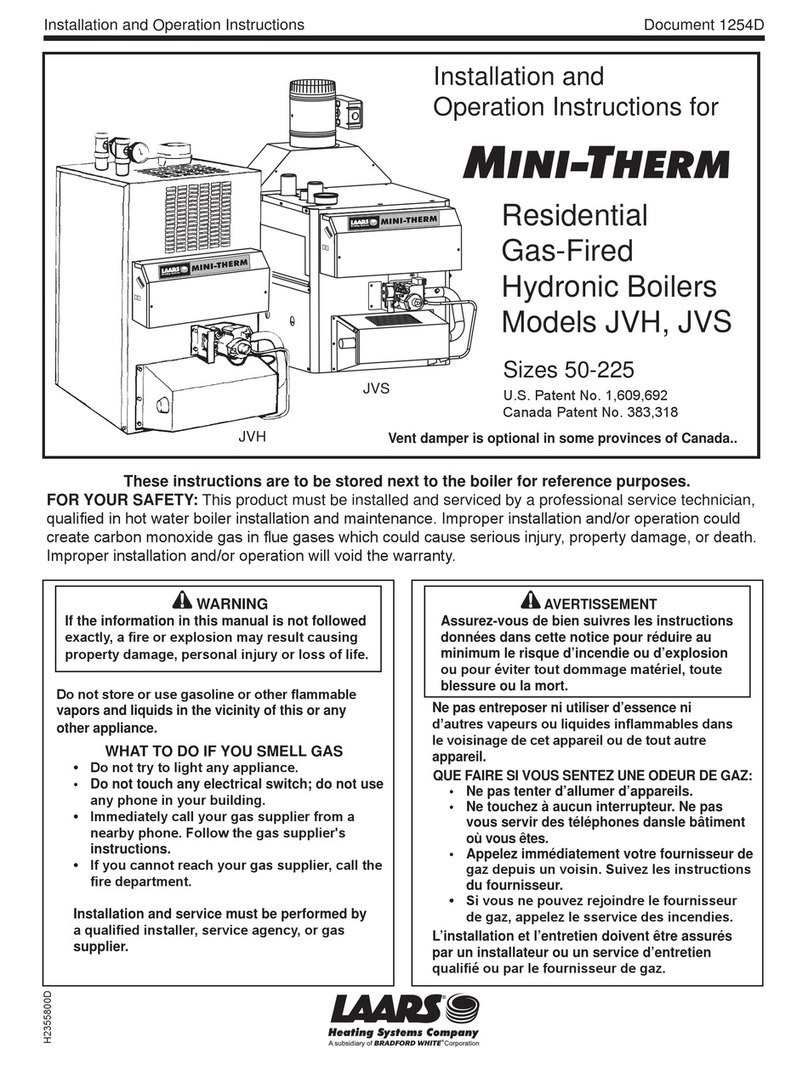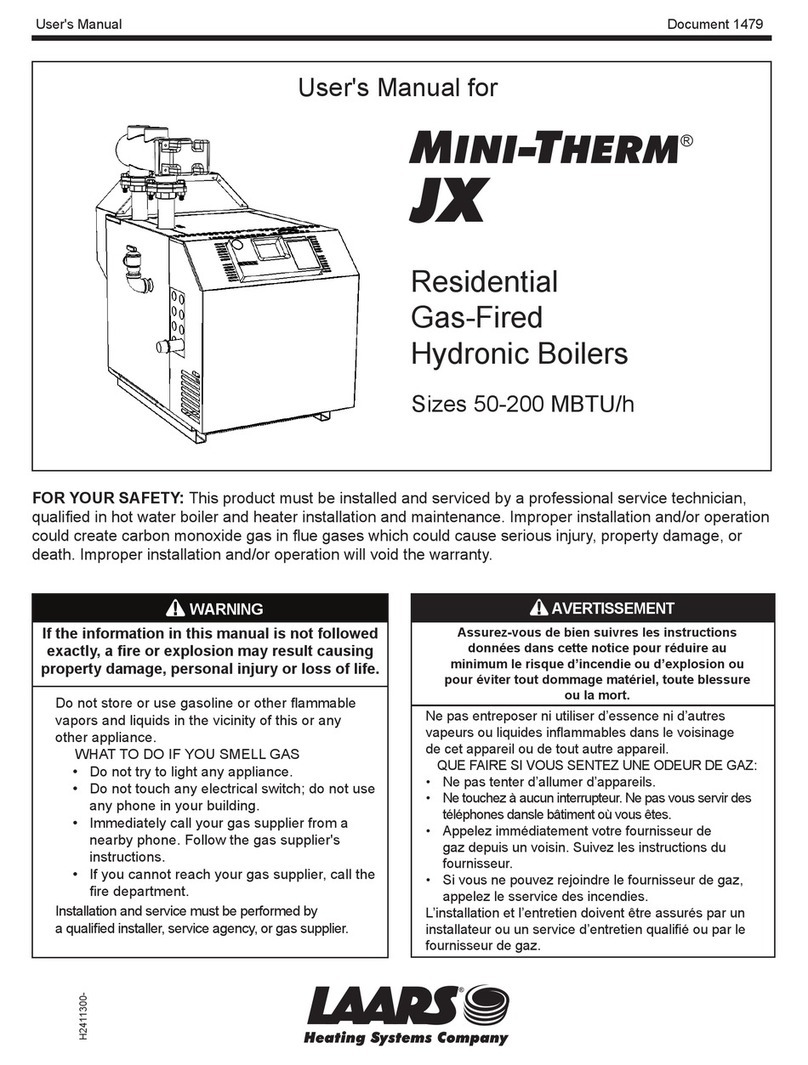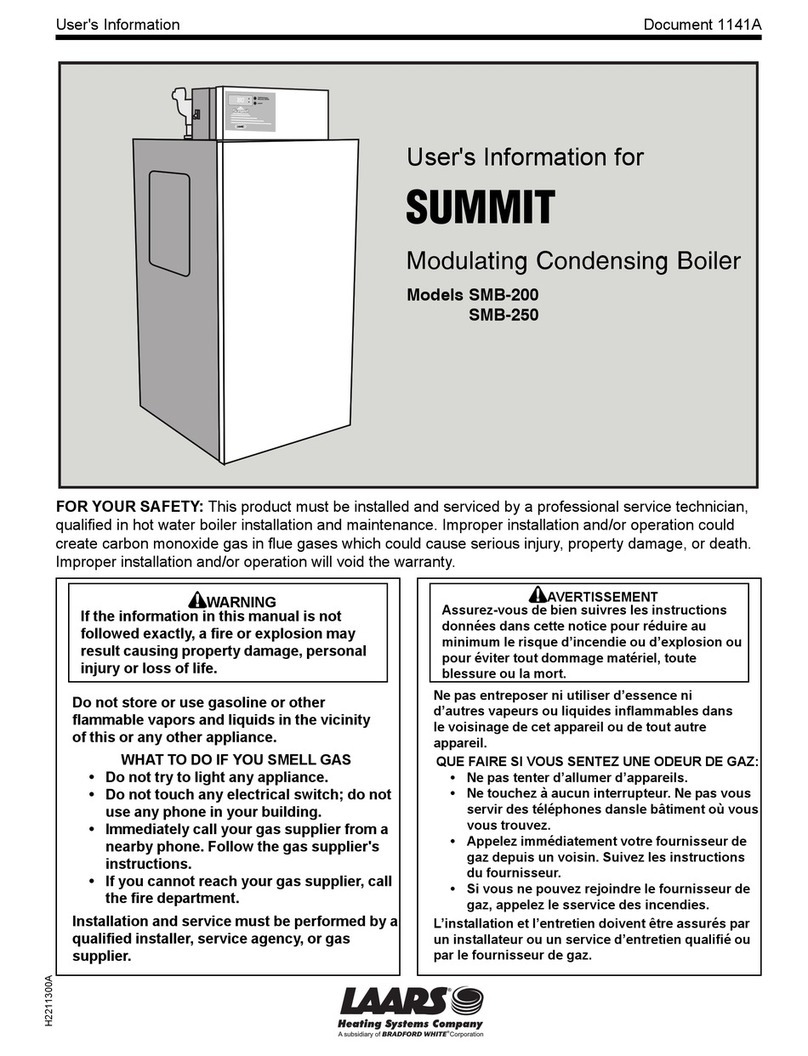
Rheos Boiler and Water Heater Page 9
Model Horizontal Combustion Horizontal Vent
Air Terminal Terminal
1200 20260701 D2004500
1600 20260703 D2004500
2000 20260703 D2004600
2400 20260703 D2006200
Table 4. Horizontal Vent and Air Terminals
For Indoor Installations.
Term Description
Pipe Single-wall galvanized steel pipe, 24 gauge
minimum (sized per section 1.9)
Joint Permanent duct tape or aluminum tape
Sealing
Insulation Not required, but recommended R5 insulation
for cold installations (consult American Society
of Heating, Refrigerating, and Air Conditioning
Engineers (ASHRAE) handbook)
Table 5. Required Combustion Air Piping Material.
The connection for the intake air pipe is in the
back of the unit. Take the plate off the back to reveal
the collar on the lter box. Run a bead of silicone
around the collar and slide the pipe over the collar.
Secure with sheet metal screws.
In addition to air needed for combustion, air
shall also be supplied for ventilation, including all air
required for comfort and proper working conditions
for personnel. The Rheos loses less than 1 percent of
its input rating to the room, but other heat sources may
be present.
2.2 Venting
The Rheos is a Category IV appliance and must
be installed with a stainless steel venting system
that complies with the UL 1738 Standard (see Table
6). It must be installed per this installation manual
and the venting system manufacturer’s Installation
Instructions. The unit’s vent can terminate through the
roof, or through an outside wall. It can be installed
through walls that are from 3" (7.6cm) to 12" (30cm)
in thickness.
See Table 3 to select the appropriate vent pipe
diameter. The rst section of venting attached to the
boiler must include a condensate drain tting and
condensate trap. Route the vent pipe to the heater
as directly as possible. Seal all joints and provide
adequate hangers as required in the venting system
manufacturer’s Installation Instructions. Horizontal
portions of the venting system must be supported to
prevent sagging and may not have any low sections
that could trap condensate. The unit must not support
the weight of the vent pipe. Horizontal runs must slope
upwards not less than ¼ inch per foot (21mm/m) from
the unit to the vent terminal. Up to ve elbows can
be used with the 50 feet (15.2m) of pipe. Subtract 10
allowable linear feet for every additional elbow used.
IMPORTANT NOTE ABOUT COMMON VENTING:
A single vent that is shared by multiple Rheos
units MUST be engineered by a competent venting
specialist, and involves the selection of draft inducing
equipment, hardware and controls to properly balance
ue gas pressures. Do not common vent Rheos
units unless the vent system meets this requirement.
Rheos units are never permitted to share a vent with
Category I applliances.
For outdoor applications, see Section 1.5.
Condensate Drain Connection: A condensate
drain connection shall be provided on the rst section
of venting attached to the boiler. Connect a clear
plastic tube between that drain connection on the
vent and a oor drain (or optional condensate pump
if a oor drain is not accessible). The plastic tube
shall be formed into a loop (trap) to drain condensate
that collects in the vent system without permitting
ue gases to escape. The condensate drain must be
installed so as to prevent accumulation of condensate.
Consult local codes for disposal method.
Term Description
Venting Heat-Fab®, Inc. Saf-T Vent®GC or CI,
System Metal-Fab®, Inc. Corr/Guard, or
equivalent sealed stainless steel
system certied to UL1738.
Insulation Not required, but recommended R5
insulation with protective cover for cold
installations (consult American Society of
Heating, Refrigerating, and Air Conditioning
Engineers (ASHRAE) handbook)
Table 6. Required Venting Material.
2.3 Locating Vent & Combustion Air
Terminals
2.3.1 Side Wall Vent Terminal
The appropriate Laars side wall vent hood must
be used, and is listed in the installation and operation
manual. The terminal provides a means of installing
the vent piping through the building wall, and must
be located in accordance with ANSI Z223.1/NFPA 54
and applicable local codes. In Canada, the installation
must be in accordance with CSA B149.1 or .2 and
local applicable codes. Consider the following when
installing the terminal:
1. The gure in this addendum shows the
requirements for mechanical vent terminal
clearances for the U.S. and Canada.
2. Vent terminals for condensing appliances or
appliances with condensing vents are not
permitted to terminate above a public walkway,
or over an area where condensate or vapor could
create a nuisance or hazard.
